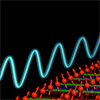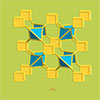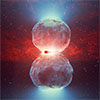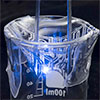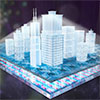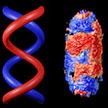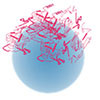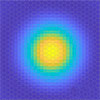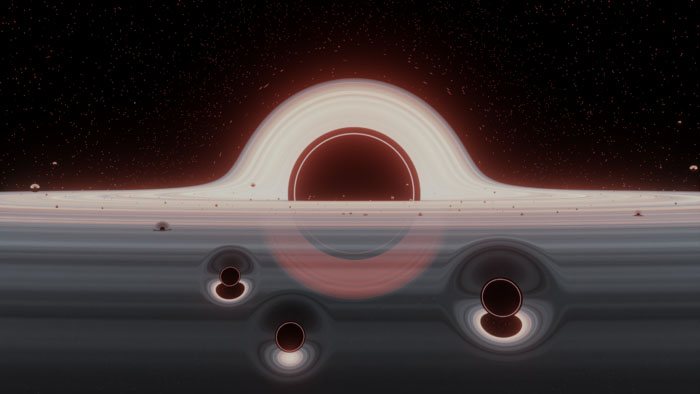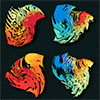Mar 10, 2022 (Nanowerk News) A new discovery by physicists at Martin Luther University Halle-Wittenberg (MLU) could make certain components in computers and smartphones obsolete. The team has succeeded in directly converting frequencies to higher ranges in a common magnetic material without the need for additional components. Frequency multiplication is...
Roadmap for finding new functional porous materials
Mar 10, 2022 (Nanowerk News) The discovery of new structures holds tremendous promise for accessing advanced functional materials in energy and environmental applications. Although cage-based porous materials, metal-organic polyhedra (MOPs), are attracting attention as an emerging functional platform for numerous applications, hardly predictable and seemingly uncontrollable packing structures remain an...
Cosmic particle accelerator at its limit
Mar 10, 2022 (Nanowerk News) With the help of special telescopes, researchers have observed a cosmic particle accelerator as never before. Observations made with the gamma ray observatory H.E.S.S. in Namibia show for the first time the course of an acceleration process in a stellar process called a nova, which...
3D-Printing smart e-clothes with liquid metal microgels (w/video)
Mar 10, 2022 (Nanowerk News) The term 'liquid metal' refers to metals with melting points near or below room temperature. Mercury (Hg) and gallium (Ga) are the two most recognized elemental liquid metals (read more here: "Using liquid metals in nanotechnology"). Hg has a low melting point of -38.8 °C,...
Researchers use flat lenses to extend viewing distance for 3D display
Mar 10, 2022 (Nanowerk News) Researchers have demonstrated a prototype glasses-free 3D light field display system with a significantly extended viewing distance thanks to a newly developed flat lens. The system is an important step toward compact, realistic-looking 3D displays that could be used for televisions, portable electronics and table-top...
A new method to quantify structural helicity in chiral nanoparticles (w/video)
Researchers have developed a novel technique to quantify the helical morphology of gold chiral nanorods. Such nanoparticles exhibit unique properties in a sense that they can change the circular polarization of light. In many cases, these properties are believed to be caused by the helical (or 'screw-like') morphology of the...
Improving nanoparticle passage through the body
Mar 10, 2022 (Nanowerk News) A new approach to send ‘friendly’ nano-particles into a patient’s blood stream has shown promising results by modifying the surface of these potential drug, vaccine or cancer treatment delivery objects to encourage the best result. In collaboration with experts in Australia and Germany’s Max Planck...
In a first, researchers image the full structure of trapped excitons
Mar 10, 2022 (Nanowerk News) Researchers announced that they have imaged the exciton’s electron and hole to produce the first full picture of this elusive quasiparticle, and showed how excitons can be trapped in dense, stable arrays. The results, they said, have important implications for the development of various future...
Black hole billiards in the centers of galaxies
Mar 09, 2022 (Nanowerk News) Researchers provide the first plausible explanation to why one of the most massive black hole pairs observed to date by gravitational waves also seemed to merge on a non-circular orbit. Their suggested solution, now published in Nature ("AGN as potential factories for eccentric black hole...
An ‘oracle’ for predicting the evolution of gene regulation
Mar 09, 2022 (Nanowerk News) Despite the sheer number of genes that each human cell contains, these so-called “coding” DNA sequences comprise just 1% of our entire genome. The remaining 99% is made up of “non-coding” DNA — which, unlike coding DNA, does not carry the instructions to build proteins....

